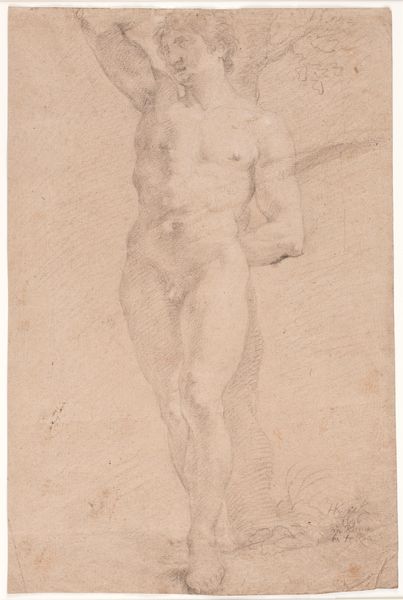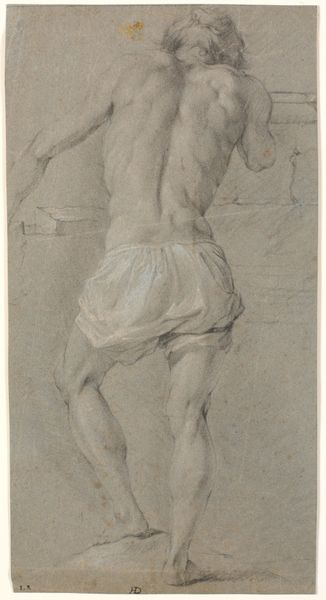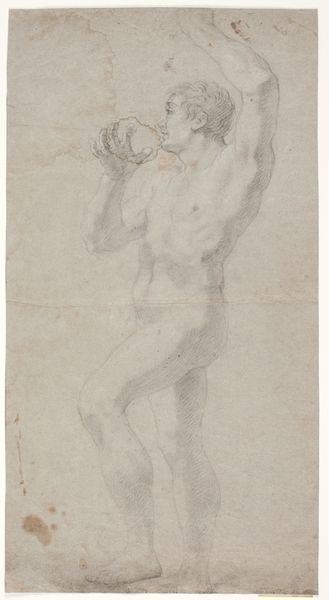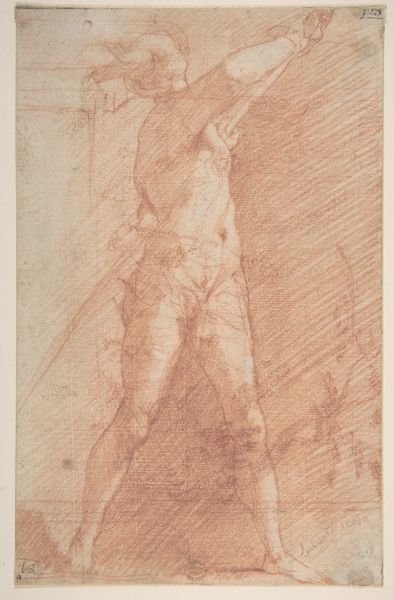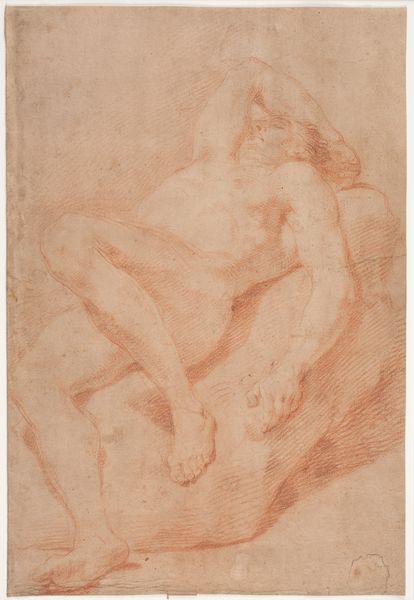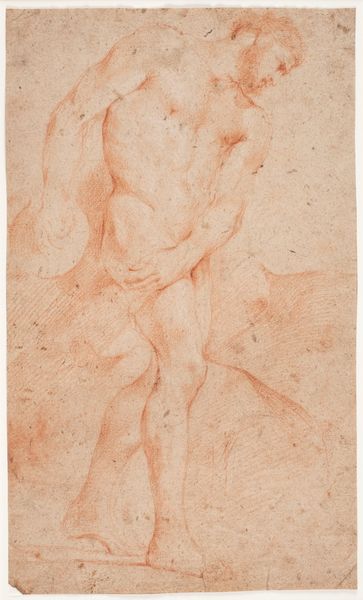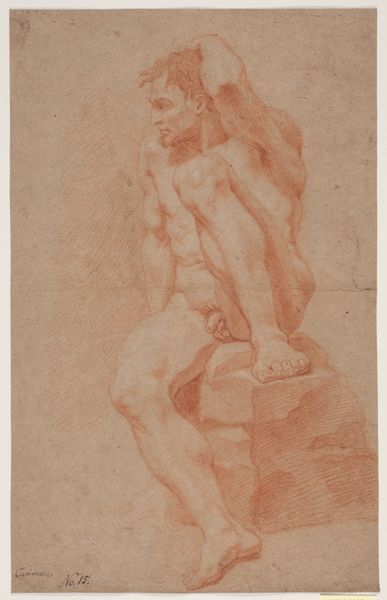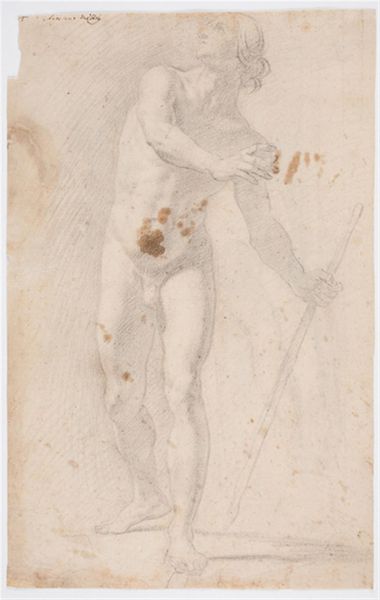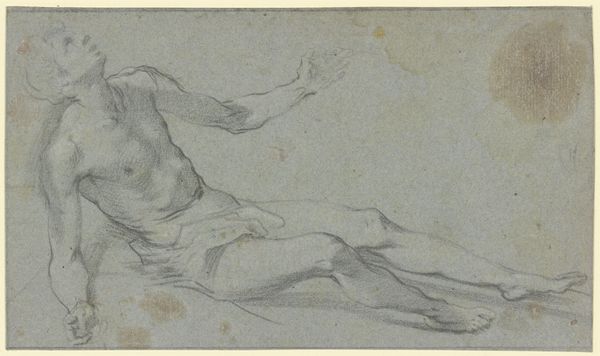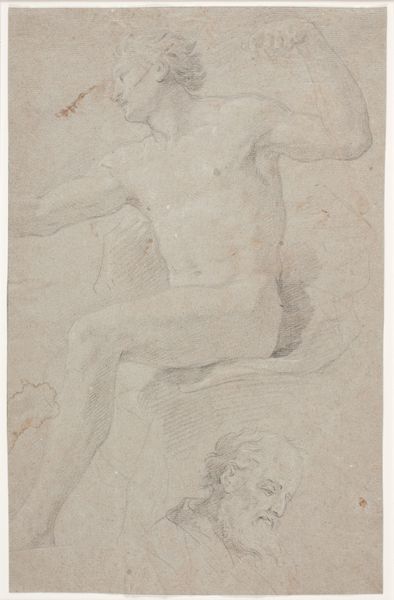
drawing, dry-media, pencil
#
portrait
#
drawing
#
dry-media
#
pencil
#
academic-art
#
nude
Dimensions: 430 mm (height) x 266 mm (width) (bladmaal)
Curator: Before us, we have Hendrik Krock's "Male Model Study Seen from the Back," estimated to have been created sometime between 1671 and 1738. The artist used pencil and other dry media in creating this drawing, which is held at the SMK, the National Gallery of Denmark. Editor: It's quite striking, isn't it? The initial effect is one of subdued power, softened by the medium and muted tones. The careful hatching describes the musculature so precisely, yet there's something ephemeral about the figure too. Curator: Absolutely. Let's consider the artist's method. We see an academic exercise clearly rooted in the prevailing artistic labor of the period, focused on the production of skilled draughtsmen. Editor: Indeed. The composition draws us in immediately with its contrast of light and shadow defining the sinuous lines of the back. Note how Krock uses cross-hatching to build depth and volume, lending an almost sculptural quality to the figure. The lines direct the viewer to the defined structure. Curator: The artwork illustrates a moment of study. It's about artistic training and what that means regarding the role of labor and models involved in art making. The male nude was both a subject of admiration and a tool within the studio. It reveals much about power dynamics. Editor: But is it only study? I read an emphasis on the form and an elegance beyond the merely academic. Look how the back flows down into a slightly twisted torso that allows for light to create highlights. A perfect construction of line and light. Curator: The way Krock represents the figure here invites discussion around gender, class, and the artist's social position, all within a formal academic system and how these drawings became valued commodities in a broader art market. Editor: I do concede that your observations regarding historical and societal context allow for a fuller comprehension, yet I hold to my argument that this drawing reveals more. The very application of material is itself a statement of aesthetic achievement, that transforms something standard into unique. Curator: True, and what's really exciting here is how these differing perspectives help us appreciate the multifaceted nature of this artwork. It speaks to the power of formal and material analysis to deepen our experience. Editor: Agreed. A true dialogue, enhancing and refining one's understanding.
Comments
No comments
Be the first to comment and join the conversation on the ultimate creative platform.
